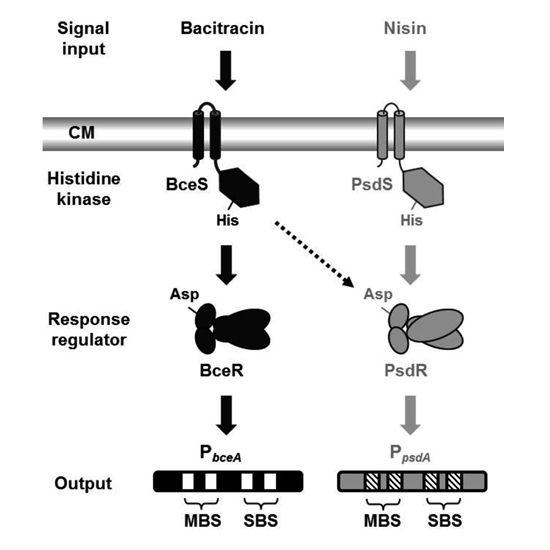Insulation and wiring specificity of BceR-like response regulators and their target promoters in Bacillus subtilis
27-Jan-2017
Molecular Microbiology, 104(1), 16–31 , doi:10.1111/mmi.13597
Molecular Microbiology, online article
BceRS and PsdRS are paralogous two-component systems in Bacillus subtilis controlling the response to antimicrobial peptides. In the presence of extracellular bacitracin and nisin, respectively, the two response regulators (RRs) bind their target promoters, PbceA or PpsdA, resulting in a strong up-regulation of target gene expression and ultimately antibiotic resistance. Despite high sequence similarity between the RRs BceR and PsdR and their known binding sites, no cross-regulation has been observed between them. We therefore investigated the specificity determinants of PbceA and PpsdA that ensure the insulation of these two paralogous pathways at the RR–promoter interface. In vivo and in vitro analyses demonstrate that the regulatory regions within these two promoters contain three important elements: in addition to the known (main) binding site, we identified a linker region and a secondary binding site that are crucial for functionality. Initial binding to the high-affinity, low-specificity main binding site is a prerequisite for the subsequent highly specific binding of a second RR dimer to the low-affinity secondary binding site. In addition to this hierarchical cooperative binding, discrimination requires a competition of the two RRs for their respective binding site mediated by only slight differences in binding affinities.











